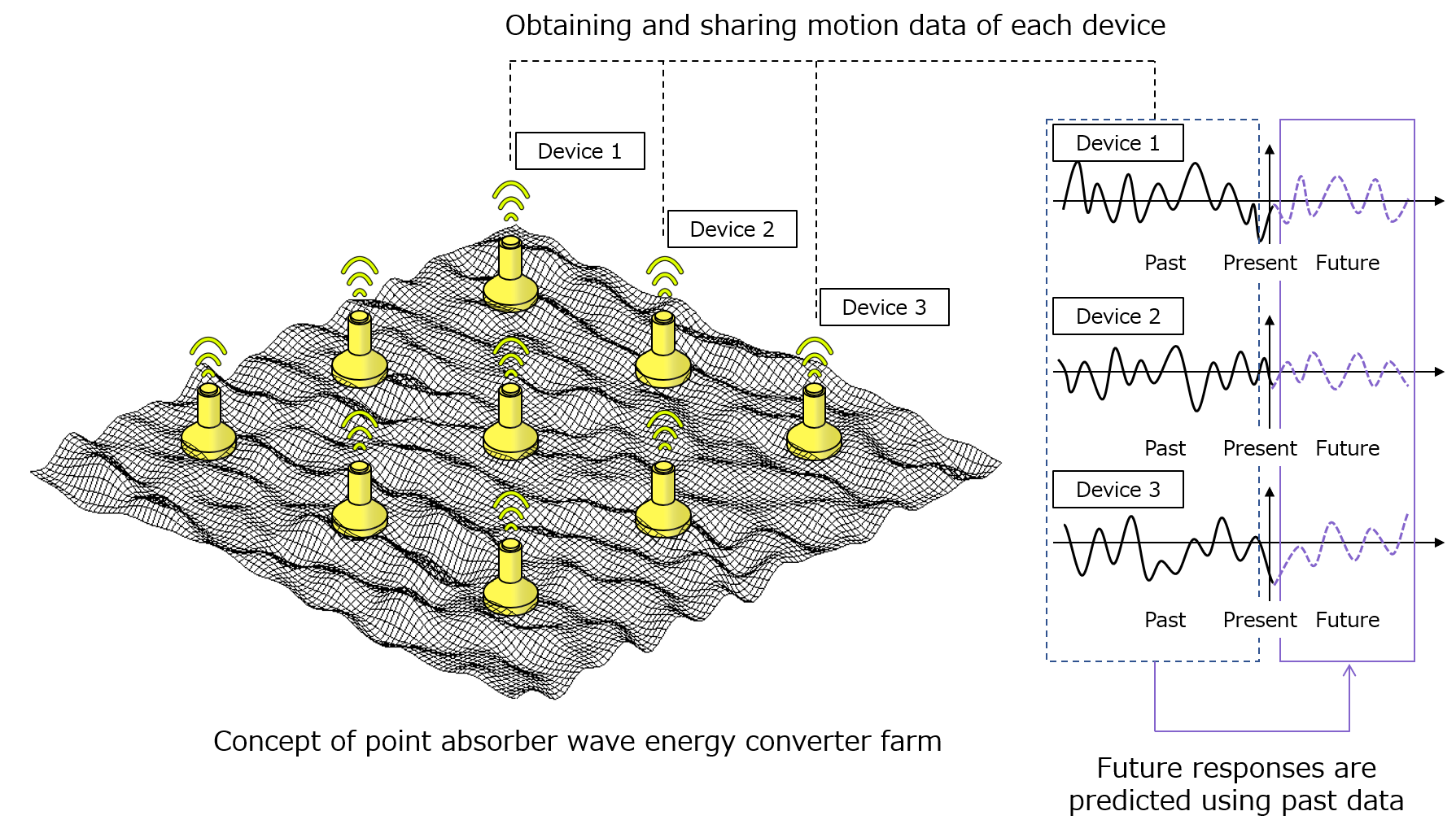Research
Development of efficient wave energy farms
To realize a decarbonized society, the development of renewable energy is essential important. Since the Earth is covered by the ocean 70%, marine-derived energy resources are abundant. Recently, offshore wind farms are dramatically spreading around the world. We expect that a wave energy converter (WEC)also become one of the primary energy resources in the future, following the development of offshore wind farms.
Our laboratory focuses on the point absorber type WEC (PA-WEC), which converts the vertical motion of the float in waves into electric energy. The performance of the PA-WEC is consistent regardless of wave direction, and it is structurally simple compared to other concepts. Therefore, it is expected that construction and maintenance costs become lower in the future. On the other hand, the electric-generating capacity of the individual device may be relatively low.
To increase the capacity, two approaches could be considered: (1) multiple devices are utilized as a farm to increase the total amount of generating energy and (2) enhance efficiency by controlling the device. Our laboratory adopts both strategies and integrates them with our proprietary real-time wave prediction method. As illustrated in the following figure, we increase the total capacity by operating multiple PA-WECs. In addition, we predict waves a few seconds in advance using motion data measured by each device, and generation efficiency is enhanced by real-time optimal control based on the predicted wave field.

Recently, we are developing schemes to accurately and efficiently calculate the motions and electric capacity of multiple PA-WECs in consideration of their mutual interactions. We are also establishing highly accurate real-time wave prediction and control methods. In addition, the power take-off system was manufactured in the following movie. We will conduct tank experiments using this device.
Please look forward to the future achievements of our laboratory.
Reference: Iida, T. (2023). Decomposition and prediction of initial uniform bi-directional water waves using an array of wave-rider buoys. Renewable Energy, 217, 119137.
Contact person: Takahito Iida
